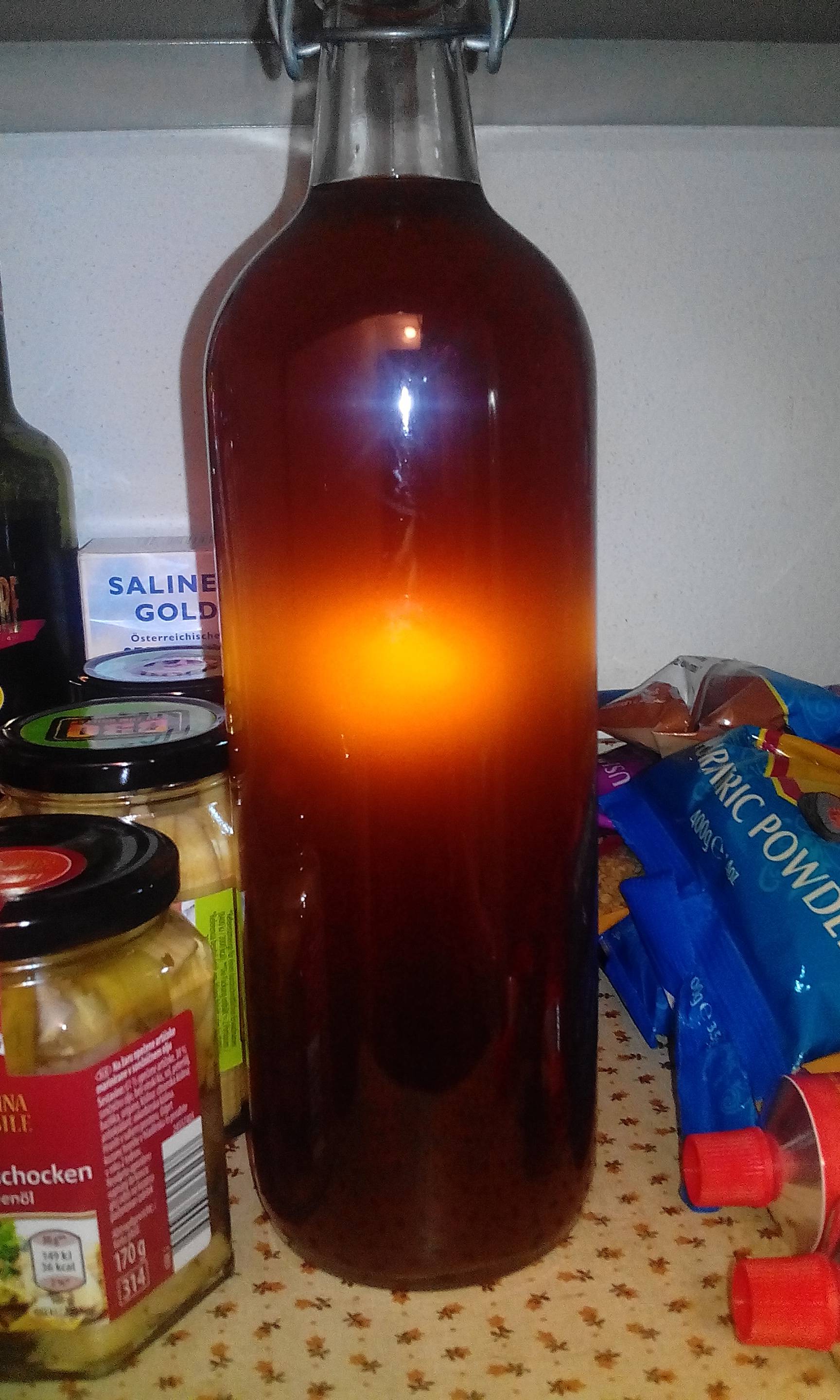BandonBrewingCo
Well-Known Member
Hi,
I brewed Revvy's Leffe Clone and bottled it last night. I was worried it was looking a little clear so I took this picture with an led torch behind it:

And after checking on it not 24 hours later all the yeast is at the bottom and I can really see the individual LEDs (can't get a good pic). They are being conditioned at approx 18C (65F)
So let's say worst case scenario:
If all of the above are true (points 1 and 2 certainly are) my plan is:
Wait a week to see if there's any sign of carbing. If there is, all is well with the world. If not, up end the bottles to resuspend the yeast.
Wait another week. If still no sign time to start worrying.
So, if after 2 weeks still nothing, time to assume my yeast is dead. Now comes the fun part, did I miss my FG because I mashed too high (possible) or because my yeast crapped out early.
If my yeast crashed out early I have A LOT of unfermented fermentable sugars in my bottles.
However, Austrian swingtop bottles stronk and I have a spare pack of US05 lying around the place.
Do I make a starter with the US05 and put a teaspoon of yeast into each of my 34 pint bottles?
Or is there another way? Or should I put in the US05 now?
All help is appreciated!
I brewed Revvy's Leffe Clone and bottled it last night. I was worried it was looking a little clear so I took this picture with an led torch behind it:

And after checking on it not 24 hours later all the yeast is at the bottom and I can really see the individual LEDs (can't get a good pic). They are being conditioned at approx 18C (65F)
So let's say worst case scenario:
- I've missed my FG by approx 6 points
- I've added priming sugar to get to 3 Volumes
- My yeast appears to be dead
If all of the above are true (points 1 and 2 certainly are) my plan is:
Wait a week to see if there's any sign of carbing. If there is, all is well with the world. If not, up end the bottles to resuspend the yeast.
Wait another week. If still no sign time to start worrying.
So, if after 2 weeks still nothing, time to assume my yeast is dead. Now comes the fun part, did I miss my FG because I mashed too high (possible) or because my yeast crapped out early.
If my yeast crashed out early I have A LOT of unfermented fermentable sugars in my bottles.
However, Austrian swingtop bottles stronk and I have a spare pack of US05 lying around the place.
Do I make a starter with the US05 and put a teaspoon of yeast into each of my 34 pint bottles?
Or is there another way? Or should I put in the US05 now?
All help is appreciated!




